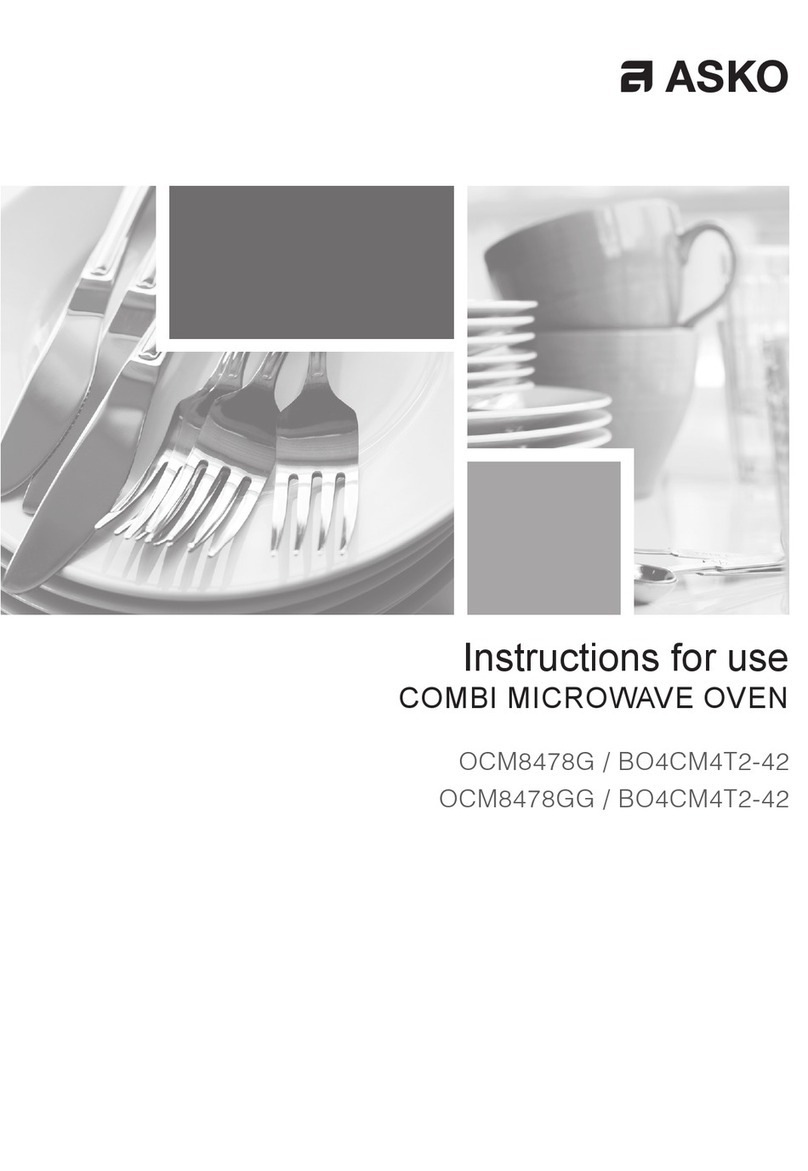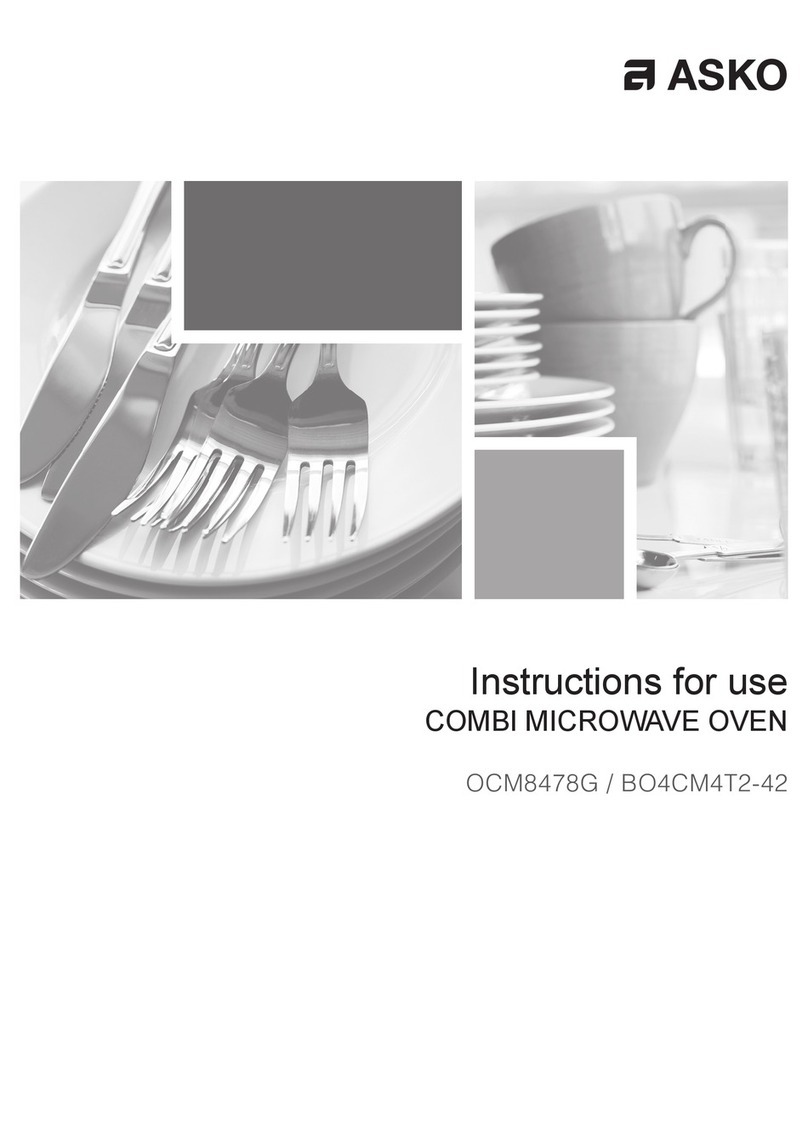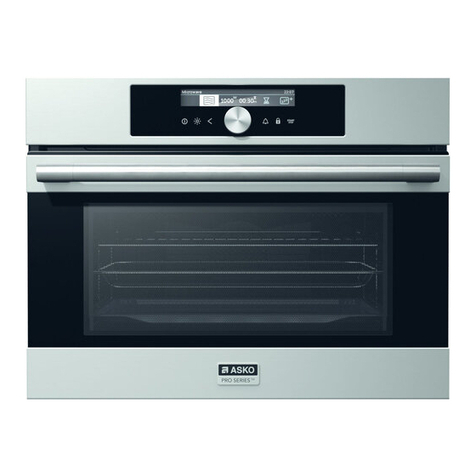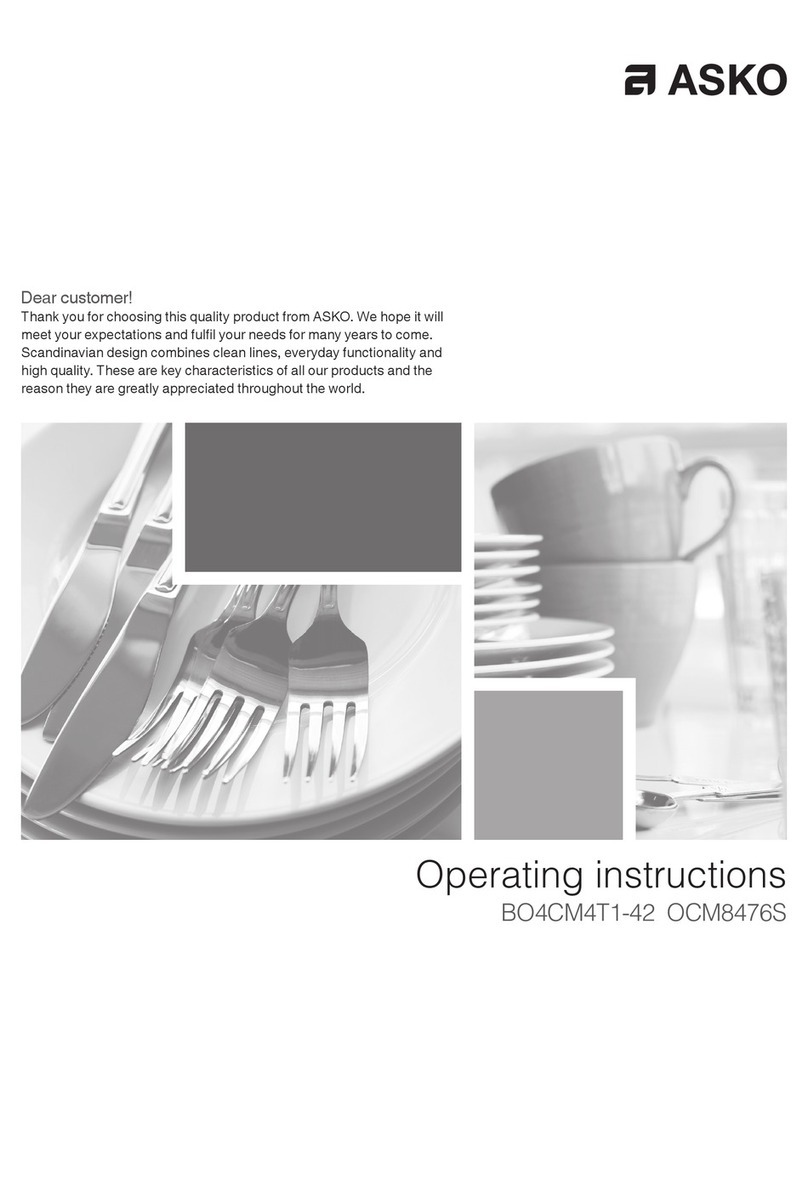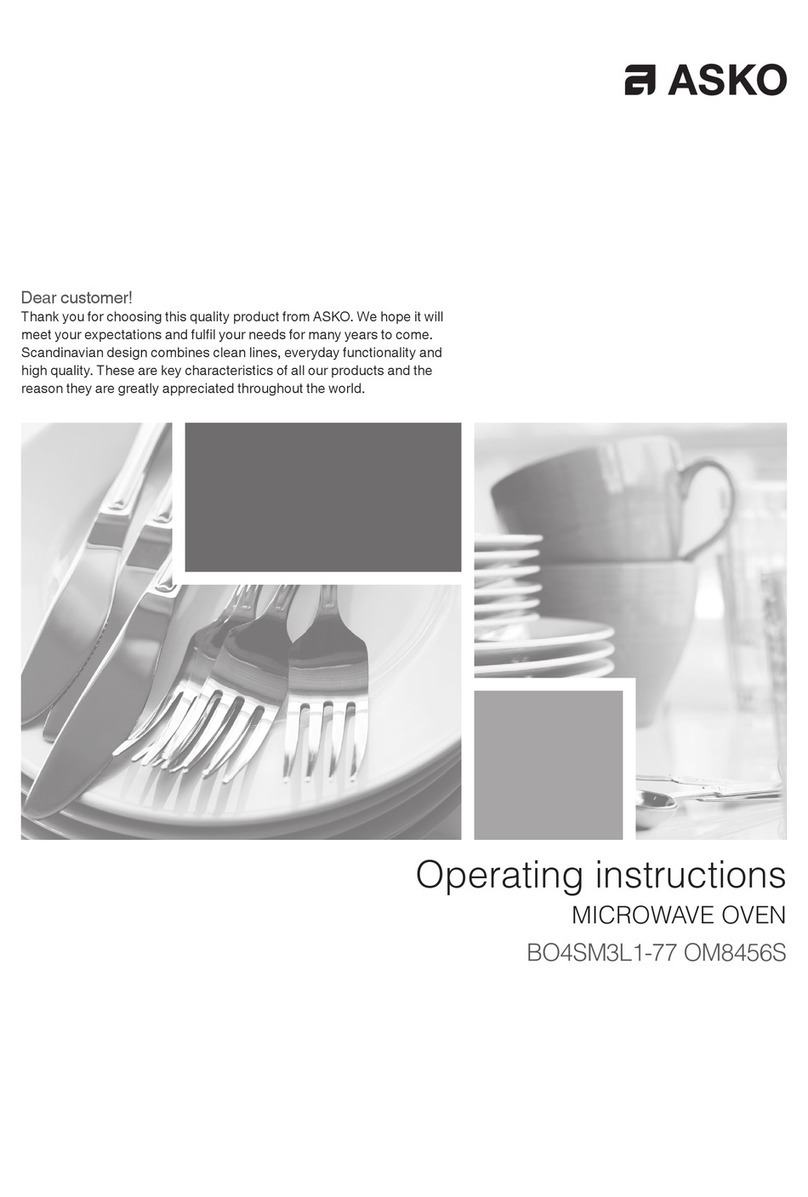
EN 7
FIRST USE
Before first use
• Open the door, remove the packaging and check the oven for damage.
• Do not use the oven if it is damaged, but contact your supplier.
• Remove the protective film from the stainless steel parts.
• Clean the oven interior and accessories with a damp cloth. Do not use any abrasive cleaner
or strong-smelling cleaning products.
• The oven will emit a strange smell when the grill is used for the first time; this is normal. You
should ensure that there is good ventilation during initial use.
Microwaves
Microwaves are high-frequency electromagnetic waves. The energy makes it possible to cook
or warm up a dish without affecting the form or colour.
Cooking principle
• The microwaves the microwave generates are spread evenly by a distribution system.
This cooks the dish evenly.
• The food absorbs the microwaves to a depth of approximately 2.5 cm. Cooking then
continues, because the heat is spread in the dish.
• The cooking times vary and depend on the dish you use and the properties of the food:
▷Quantity and density
▷Moisture content
▷Starting temperature (whether or not it is chilled)
Please note!
The dish is cooked from the inside out by means of heat distribution. The cooking
continues even when you take the dish from the oven. Standing times in recipes and
in this book should therefore be adhered to, in order to ensure:
• Even heating into the middle of the dish.
• Equal temperatures in all parts of the dish.








